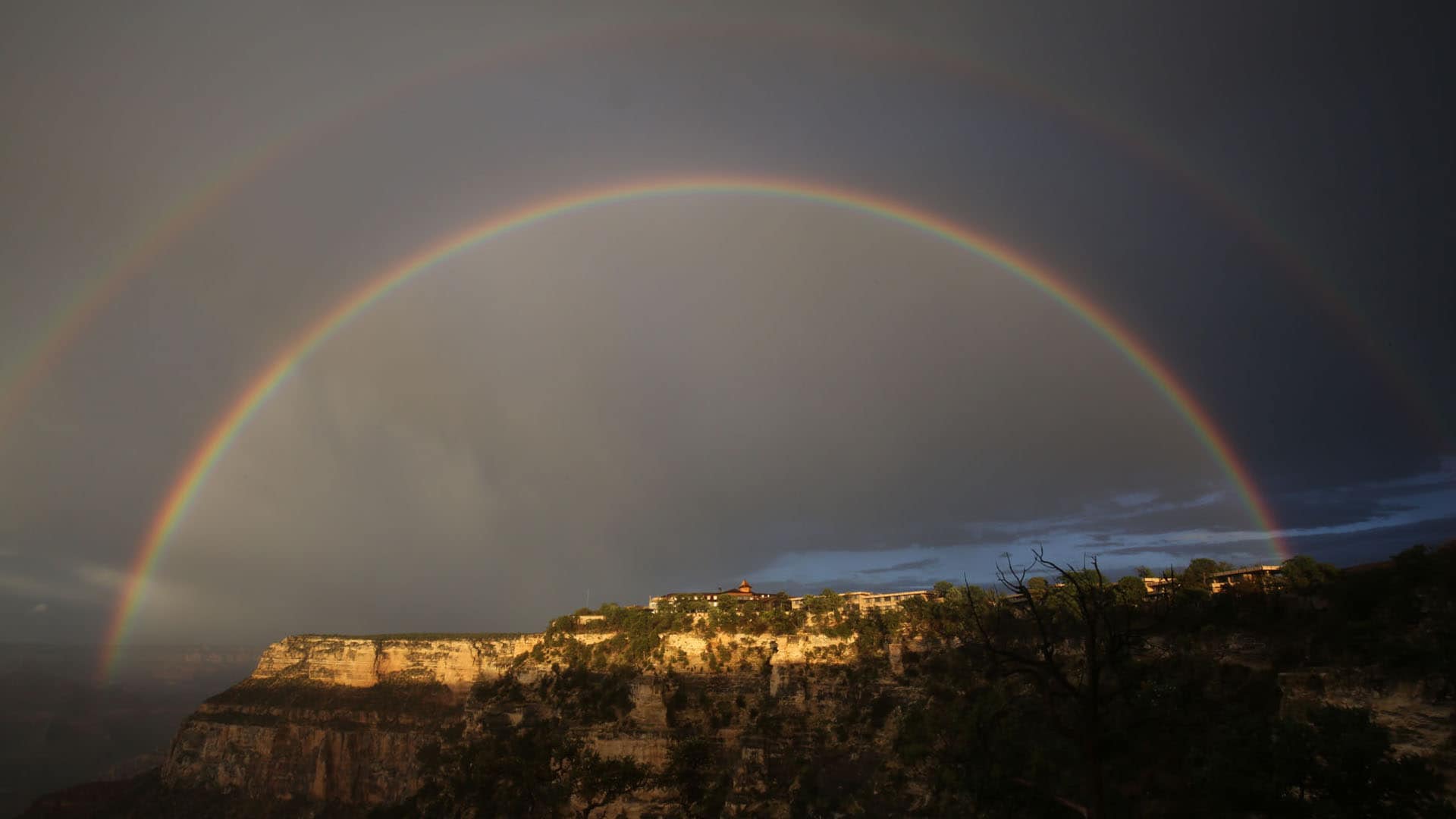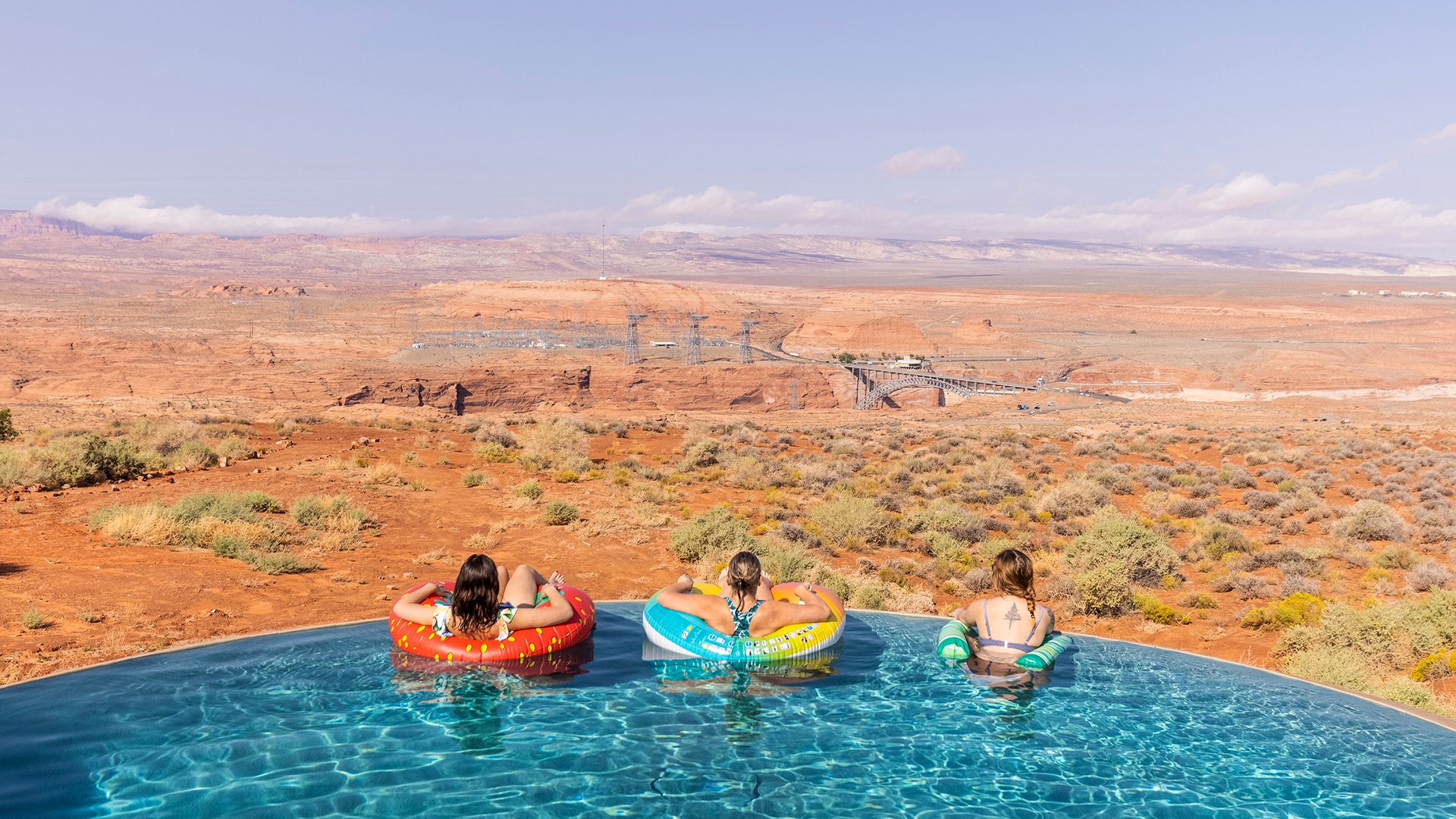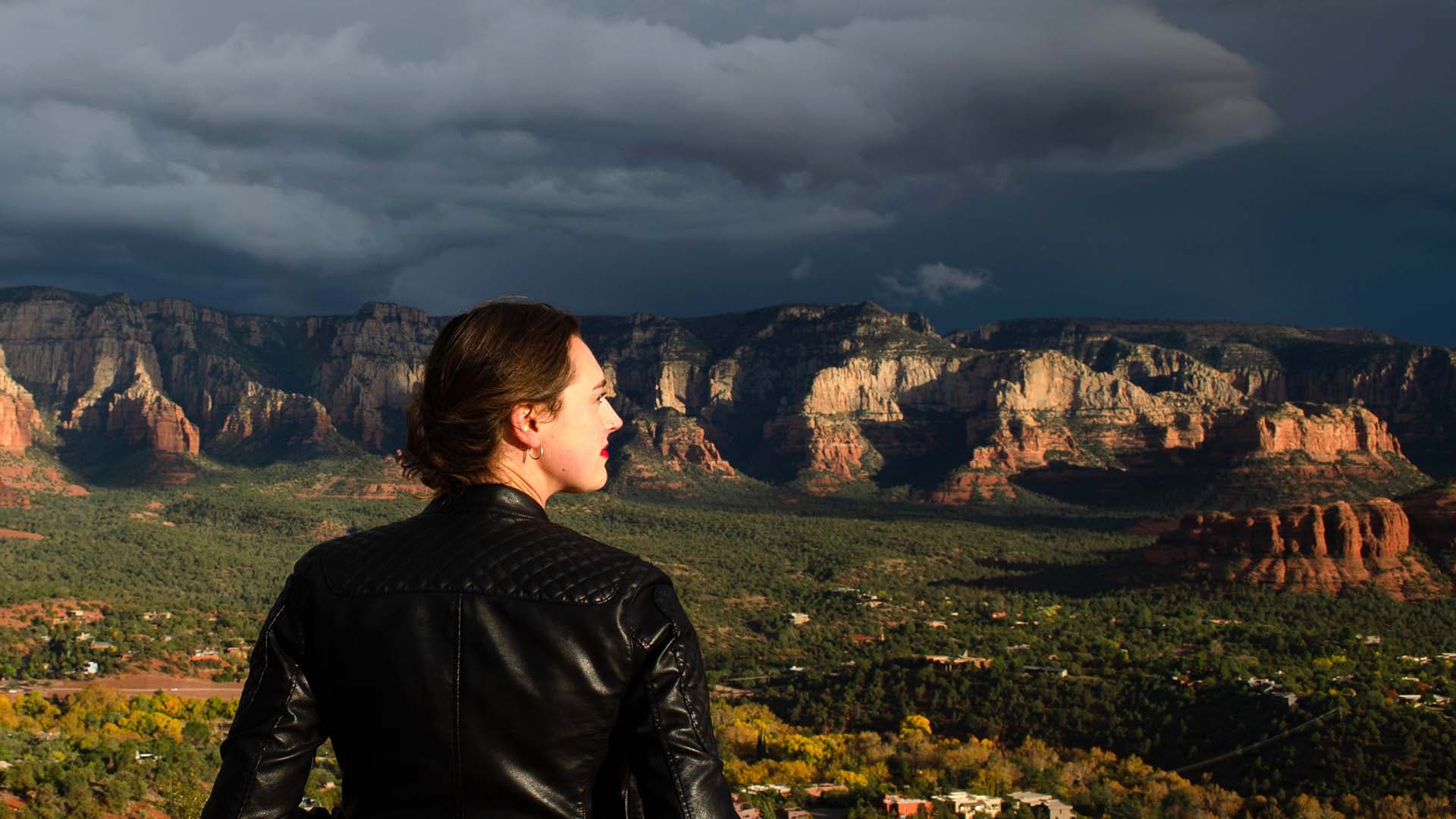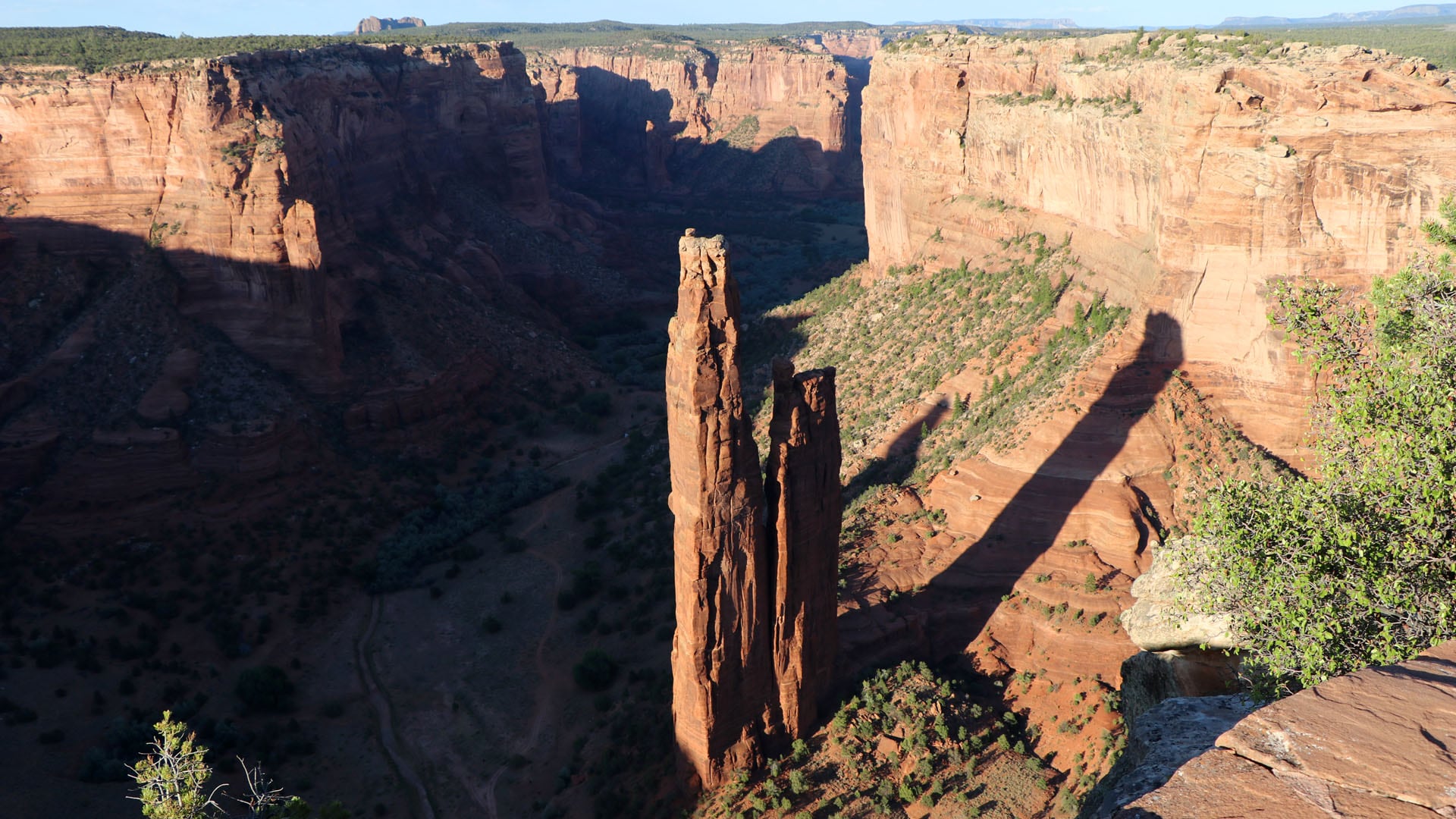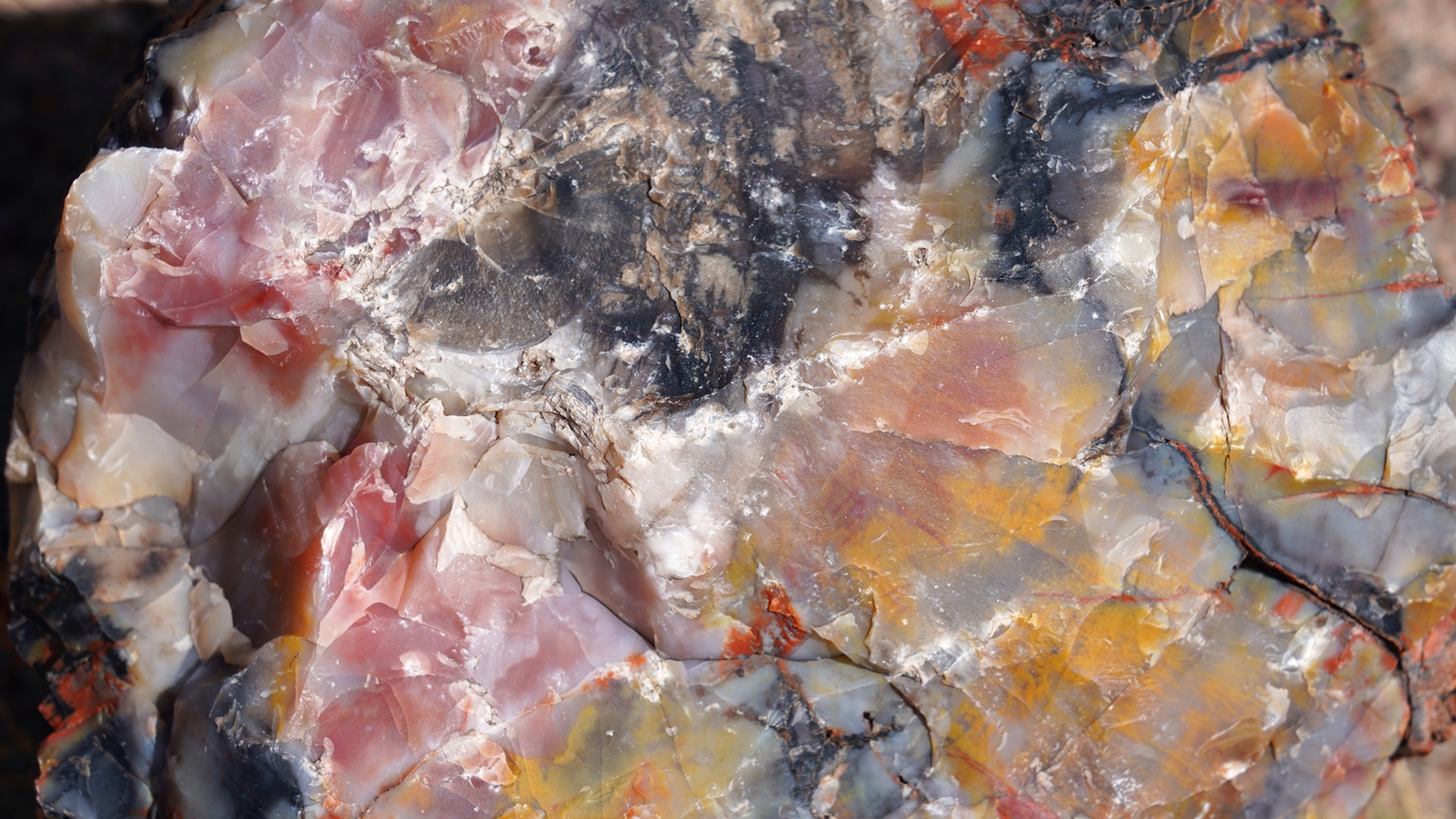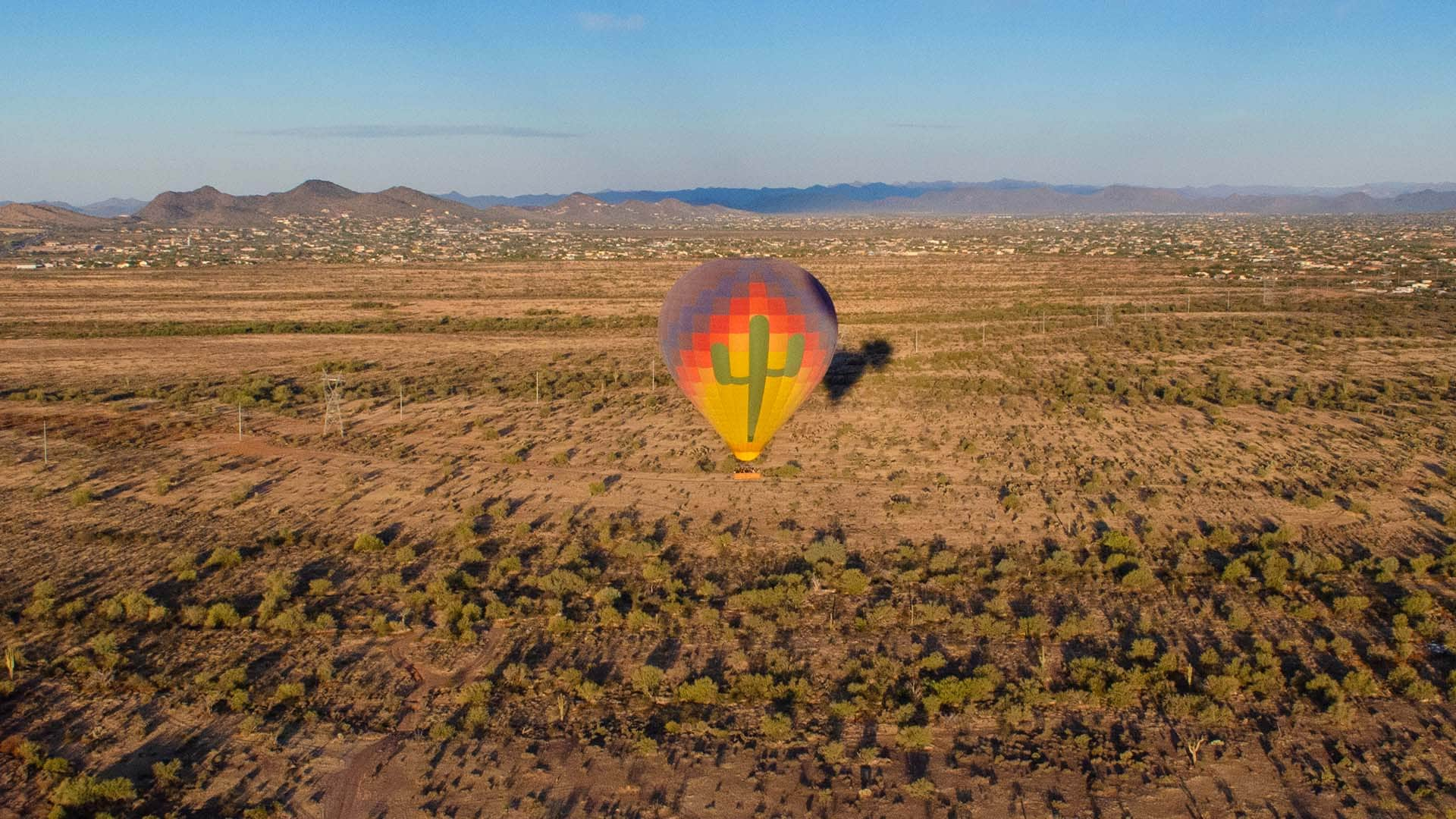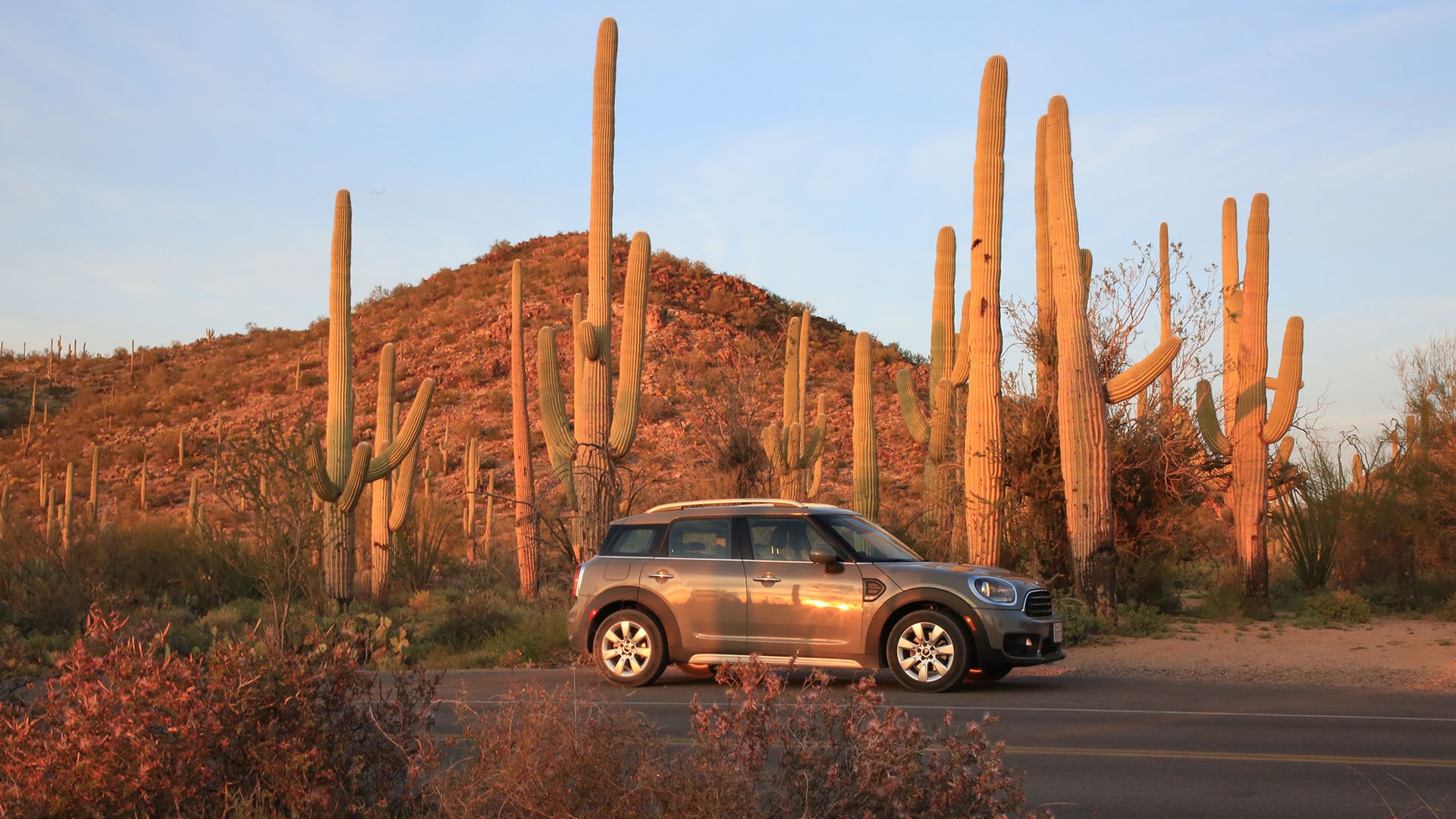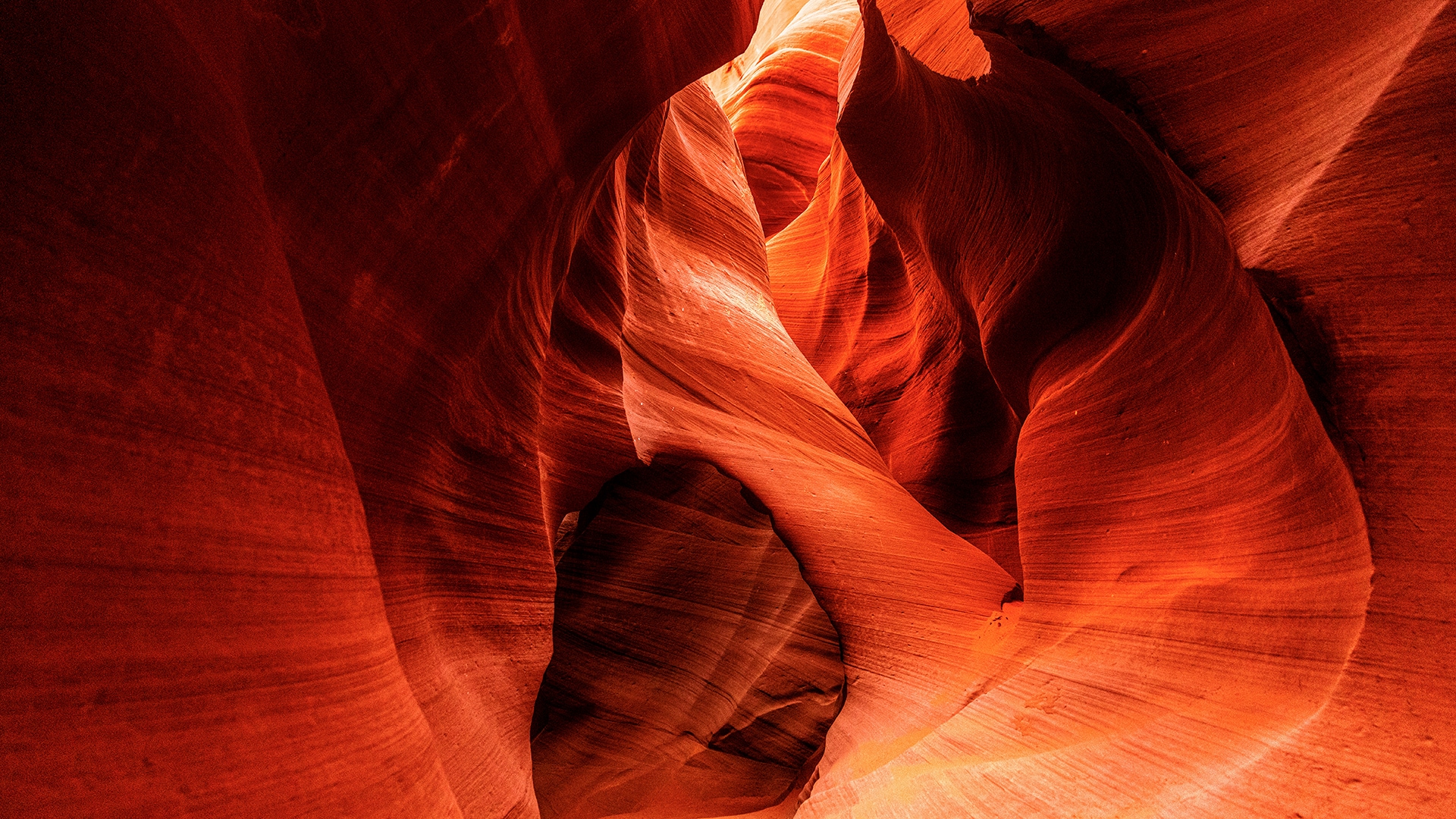Petrified Forest National Park Keeps Its Secrets
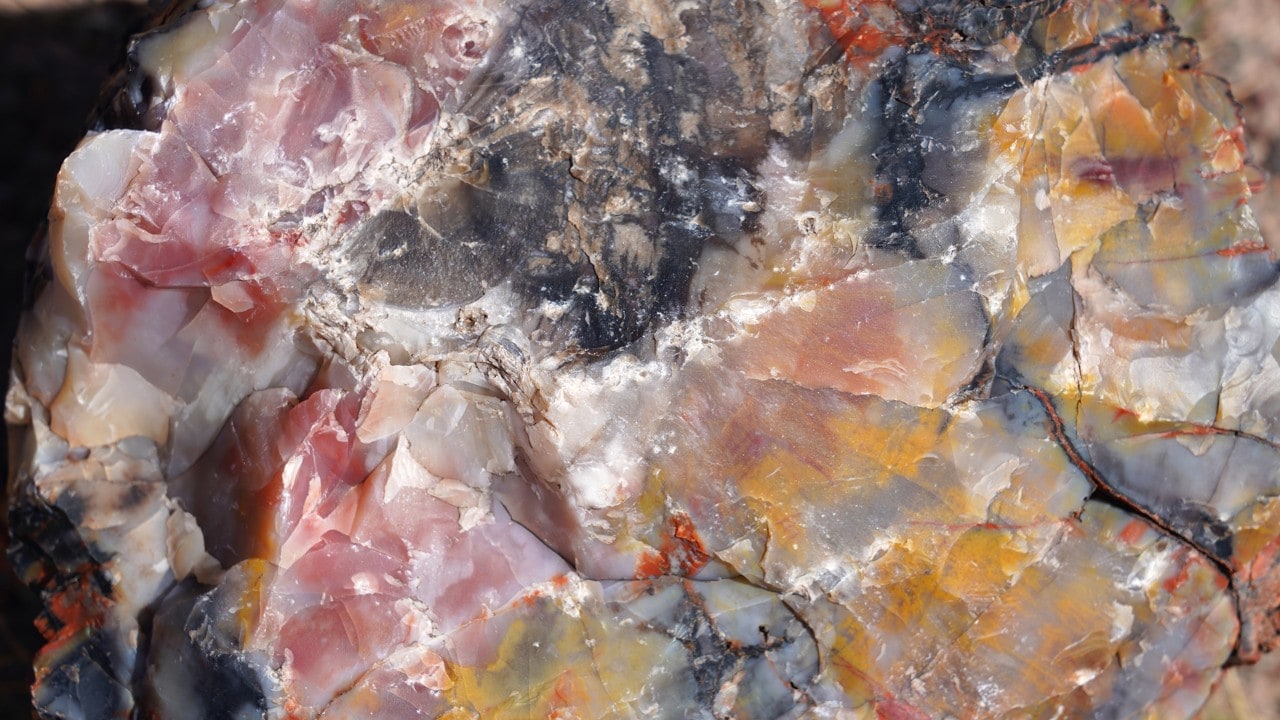
The beautiful colors in petrified wood are due to mineral impurities within the quartz.
Story and photos by Charles Williams
Charles is the editor for Pursuits with Enterprise. Email the author.
Geologists, paleontologists and other riddle-solvers will enjoy spending time at this Arizona treasure.
Most cut logs reveal rings that indicate a tree's age, but logs strewn throughout the Petrified Forest National Park reveal random patterns rendered in luminous reds, yellows, oranges, purples and pure white.
How did this happen? Over millions of years, the trees' wood became crystals. The colorful crystalline quartz in petrified wood is the result of mineral impurities that built up during the petrification process. Iron oxides provide the bright colors, manganese oxides make blacks and grays and pure quartz looks white.
You don’t have to understand the scientific processes to enjoy a road trip to America’s 24th national park, but knowing that the logs there were already solid crystalline quartz by the time T. Rex walked the land some 135 million years later adds to the allure of the mysterious landscape.
How did the wood come to be petrified? Why are so many logs concentrated in a treeless desert? Why do they look as though someone cut them with a saw? Adopting the persona of an old-time sleuth, I drove to Petrified Forest National Park expecting to find answers among the many clues scattered around, some of which date as far back as 218 million years.
The park itself is somewhat of a mystery for many travelers, due to its remote location in northeast Arizona, a state that is home to three national parks. Grand Canyon National Park draws 6 million visitors a year and Saguaro National Park attracts around 1 million. Petrified Forest receives only about 650,000, which allows plenty of space for solitude and reflection.
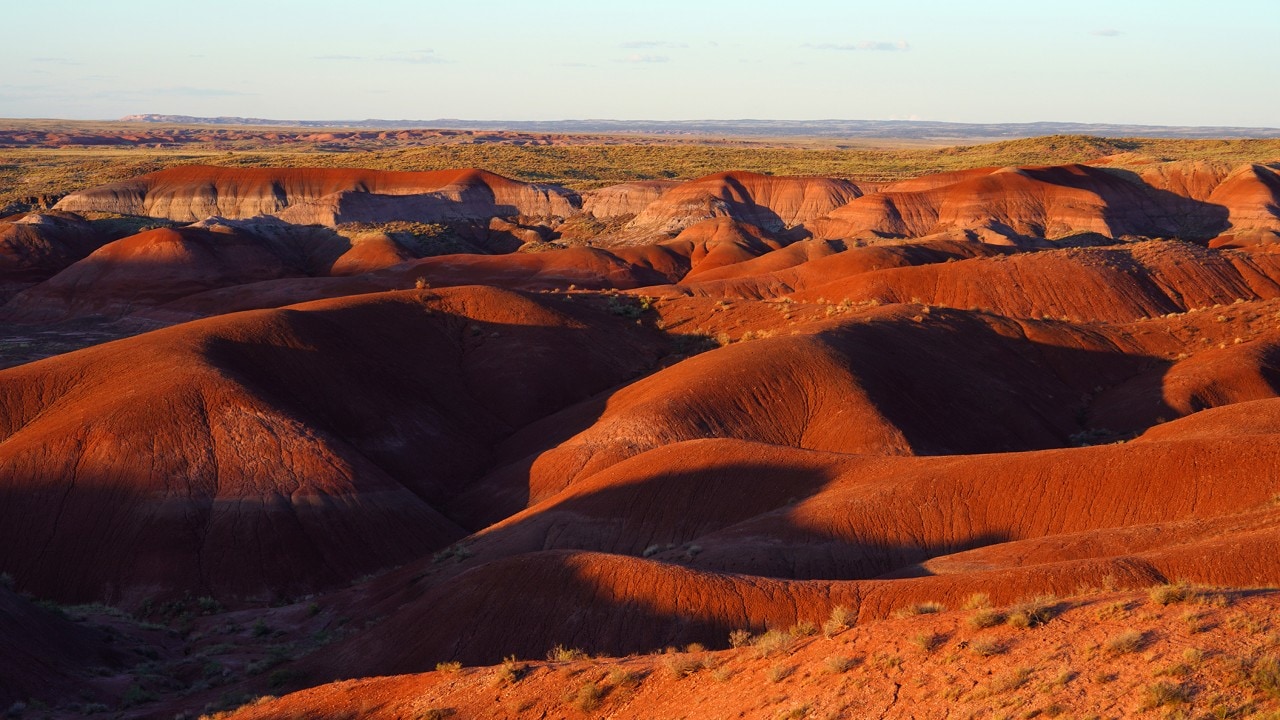
The sun sets on the Painted Desert in Petrified Forest National Park.
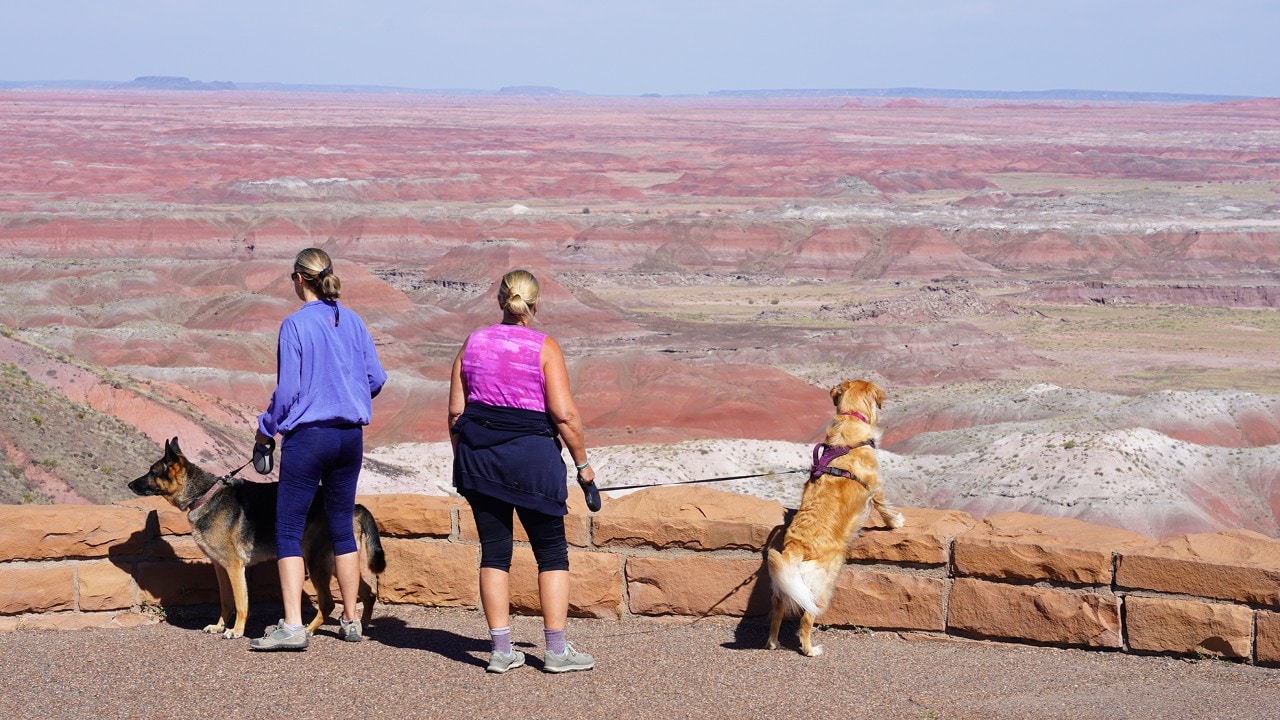
Visitors and their four-legged friends look out over the Painted Desert from Tawa Point.
Exploring the Park
Petrified Forest provides north and south entrances, with a 28-mile long road running in between. I chose to enter from the north because I was driving on I-40, which passes close by. My first two stops, less than 2 miles from the entrance, completely changed my perception of the park, where I’d expected to see only petrified wood. At the Tiponi and Tawa viewpoints, the Painted Desert stretches for 120 miles, with hills that reflect the setting sun in an undulating array of reds, oranges, pinks and even lavenders.
One layer of color seamlessly blends into another, as though an artist ran a watercolor brush over the reddish mudstone and brown sandstone. I was mesmerized.
The Painted Desert Inn National Historic Landmark sits perched on Kachina Point overlooking this beautiful scenery. Built over 100 years ago, the inn now functions as a museum, with no overnight accommodations. Inside, murals painted by Hopi artist Fred Kabotie depict Hopi culture — the Buffalo Dance, a trek to a sacred salt lake, planting time and images of Tawa, the tribe’s sun god.
The half-mile Painted Desert Rim Trail to Tawa Point is one of the most memorable hikes in the park. Starting at the inn, the trail passes through pinyon-juniper shrubland as it follows the edge of the canyon. If I’d had only an hour in the park for that hike, I would have left satisfied by the trail's breathtaking scenery. But the Painted Desert was only the beginning.
Traveling farther south, visitors come upon a rusted 1932 Studebaker, seemingly out of place and time. From the pullout, a line of telephone poles mark the former path of Route 66 as it passed through the park from 1926 until 1958. Petrified Forest is the only national park that included a section of the historic road, and the old car pays fitting homage.
Two sites nearby mark the existence of early residents who made their homes on the land for more than 13,000 years. Puerco Pueblo, which showcases the 600-year-old ruins of a large former Native American pueblo, and Newspaper Rock, which boasts over 650 petroglyphs, both display remnants of earlier civilizations. Researchers are still working to interpret the petroglyphs, hoping to uncover the meaning of all the symbols. No linear story is evident — just individual markings that add one more mystifying twist to the park.
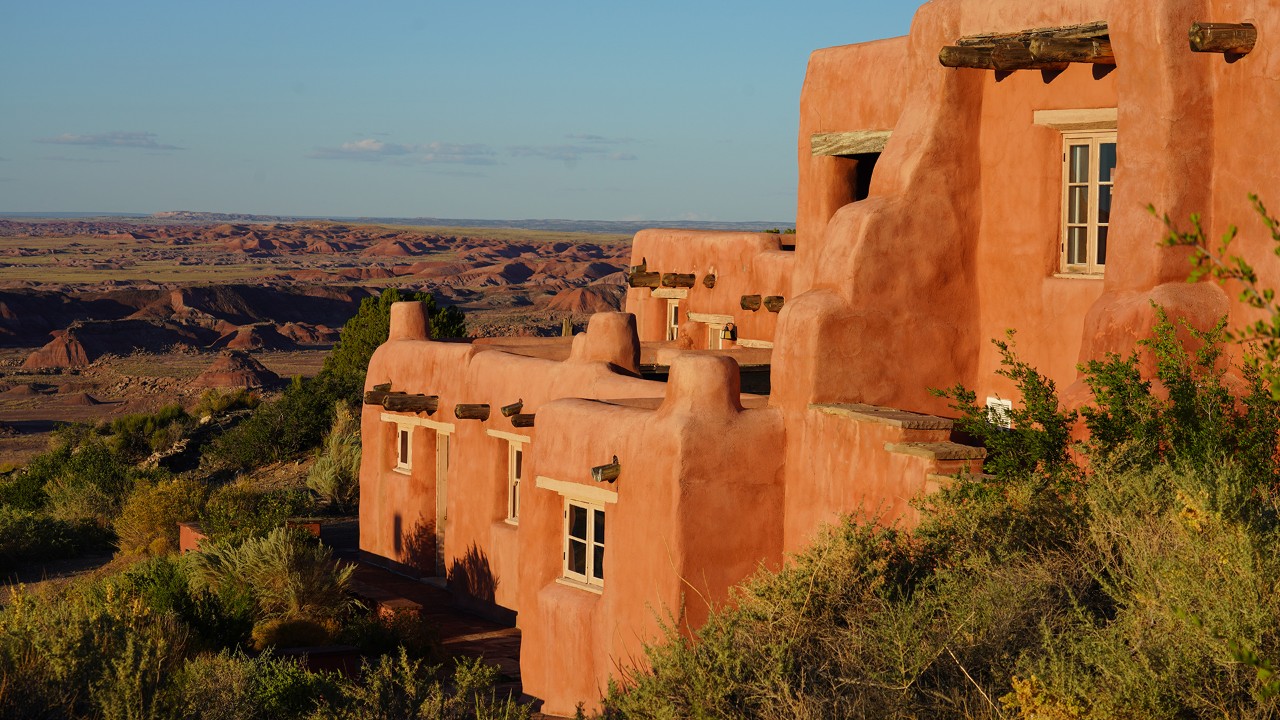
The Painted Desert Inn’s adobe facade dates back to the 1930s.
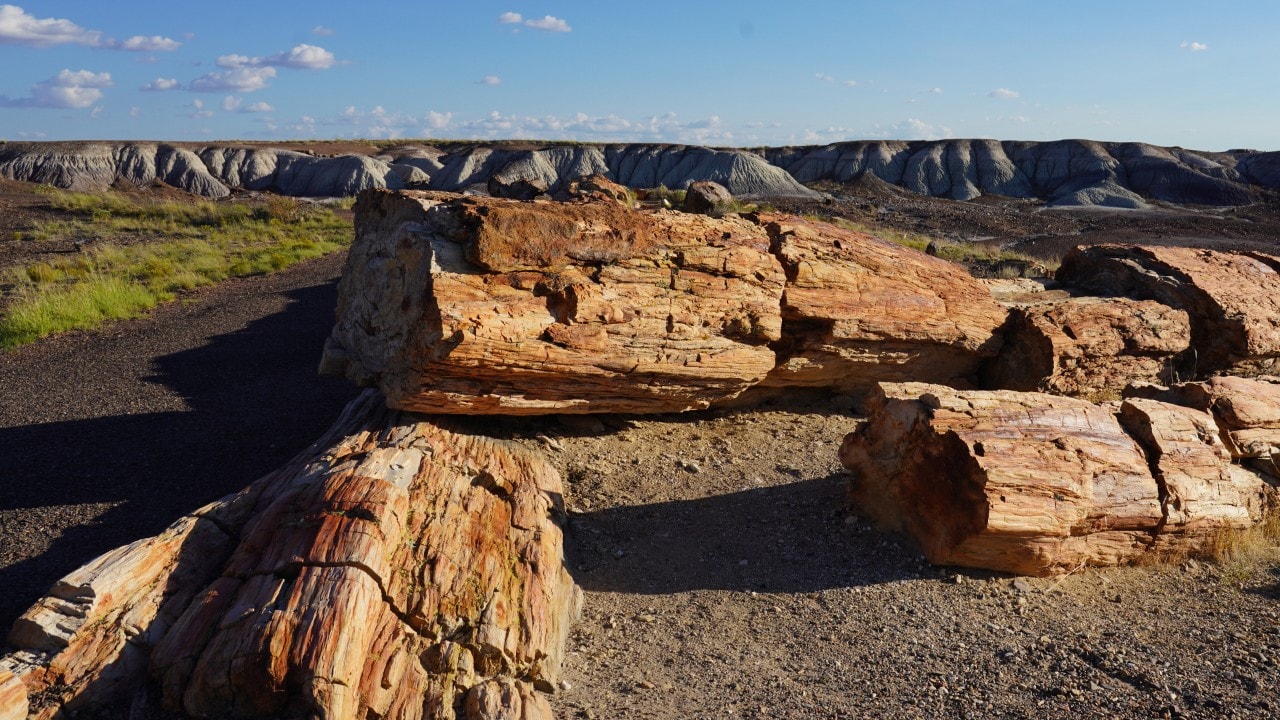
Two trees in the Long Logs area of the Rainbow Forest measure 137 and 141 feet long.
Petrified Wood 101
The stunning Blue Mesa Trail, which cuts through badlands of bluish bentonite clay in the southern end of the park, was my favorite hike. The laterally striped, weather-worn hills seemed surreal, and petrified logs lie scattered among the 1-mile loop, allowing visitors to get an up-close view. To reach this otherworldly trail, be prepared to descend a steep walkway from the parking lot.
A plaque informs visitors that the southern end of the park contains the largest concentration of petrified wood in the world. (Other large deposits are located in North Dakota, Argentina and Egypt.) But how did petrified trees get to this arid land? During the Triassic period, the area that now constitutes Petrified Forest was part of the supercontinent Pangea. At the time, the land was much closer to the equator, about where Costa Rica, which teems with trees, is today.
Pangea broke apart, and the North American continent drifted north. About 218 million years later, it ended up at its current location on the Colorado Plateau. Over millions of years, the plateau slowly lifted the land up until it was a mile above sea level.
Back in the Triassic period, conifer trees lined rivers, and as the trees fell into the water, they formed log jams. Over time, the floating trees were buried by layers of silt. Silica-enriched groundwater seeped into the logs, replacing the organic molecules in the wood with colorful crystalline quartz. As weather eroded the landscape, the quartz logs emerged. Though they appear to have been purposely cut into pieces, that isn’t the case. The heavy quartz logs are brittle. As they settle, they crack and eventually break perpendicular to their length, like glass rods. Another mystery solved!
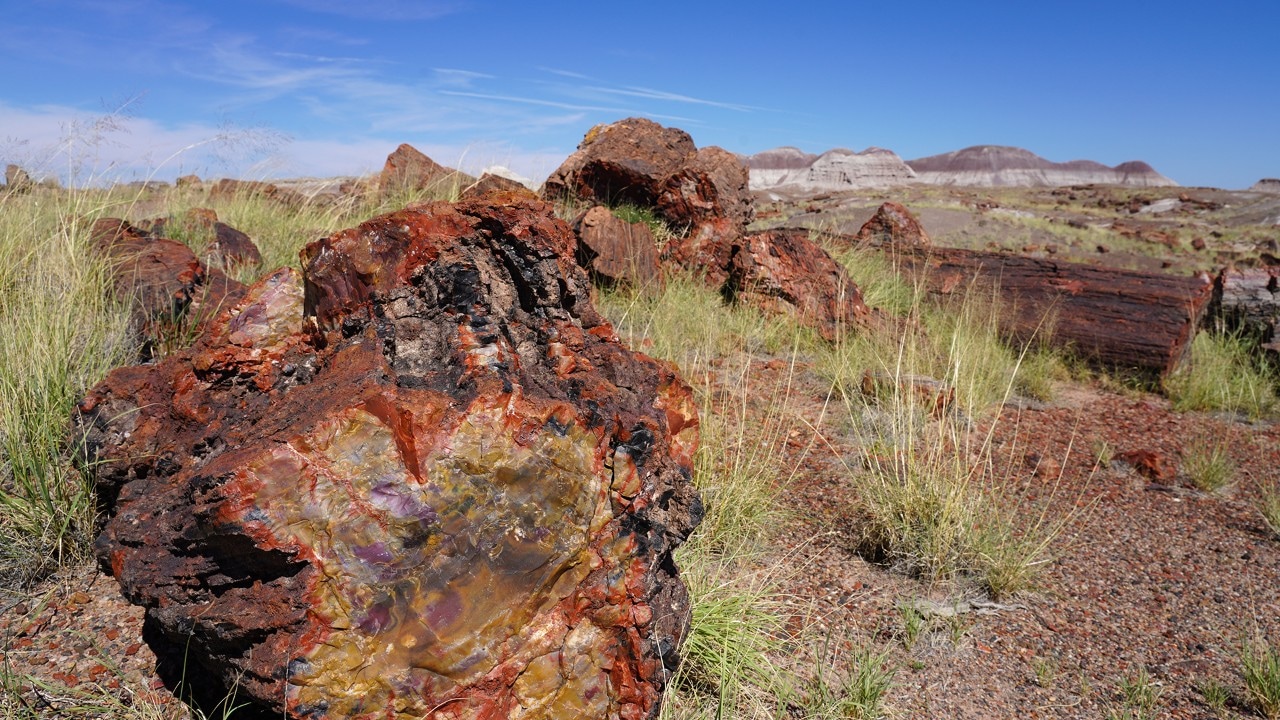
The Crystal Forest Trail is named for the beautiful crystals seen in the logs.
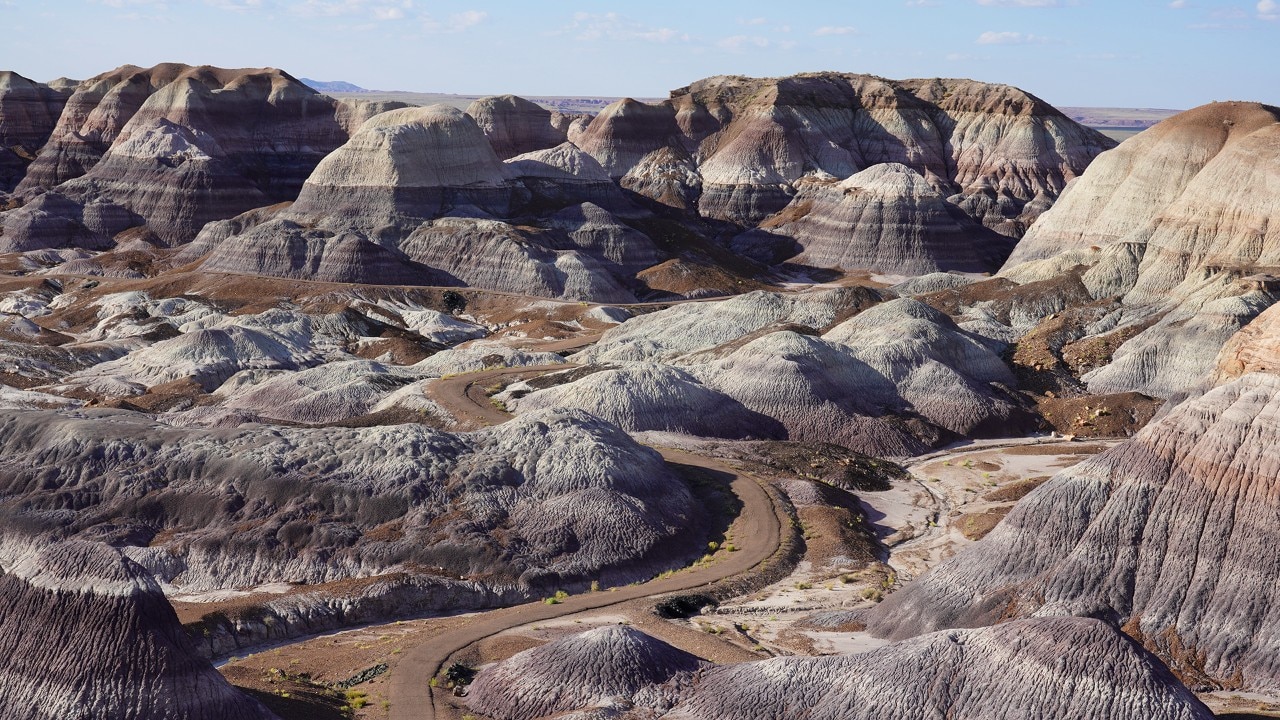
Plant and animal fossils have been found in the sedimentary layers of the Blue Mesa.
Hiking among the Giants
The petrified wood is best seen along three trails in the park — Giant Logs (0.4 miles), Long Logs (1.6 miles) and Crystal Forest (0.75 miles). Both Giant Logs and Long Logs feature some of the largest petrified trees in the park. "Old Faithful," resting on the Giant Logs trail, is almost 10 feet wide at its base.
The 0.8-mile Crystal Forest Trail was my pick of the three because I was there at sunset, when the beautiful quartz crystals benefited from the strong, directional sunlight. A kaleidoscope of colors — jewel-like crystals of clear quartz, purple amethyst, yellow citrine and smoky quartz — seemed to burst from the monochromatic desert.
The stunning beauty of Petrified Forest National Park is enhanced by its seemingly simple landscape, but remember that countless layers of soil still hide its true complexity — and the promise of secrets still undiscovered.
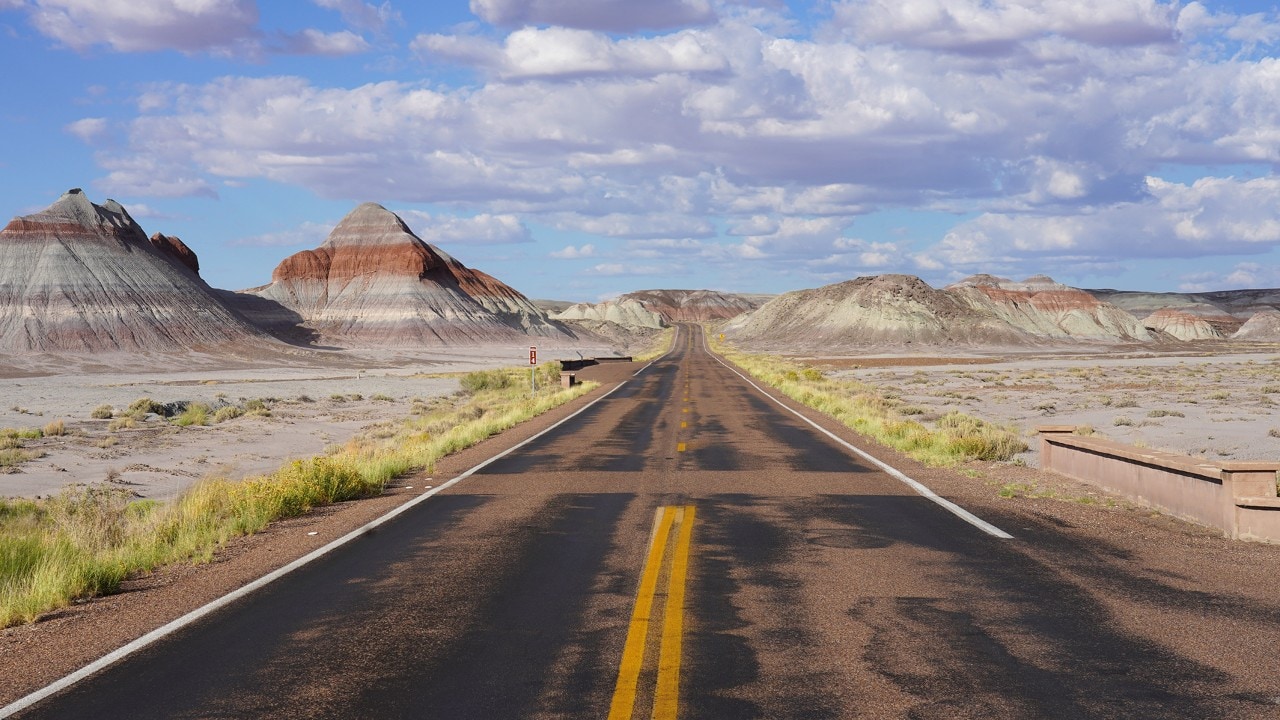
The road through Petrified Forest passes by the Teepee formations.
Related
Read more stories about Arizona.
- National Park Tradition Renews Family Ties
- Road Trip to Five National Parks Near Los Angeles
- Grand Canyon Hike
- Family Reunion in Arizona
- Nostalgic Route 66 Road Trip: Santa Monica to Albuquerque
- Romantic Getaway in Sedona, Arizona
- Road Trip to Canyon de Chelly National Monument
- Petrified Forest National Park
- Hot Air Ballooning in Arizona
- Road Trip to Saguaro National Park
- Photographing in the American Southwest
- Arizona Trips



